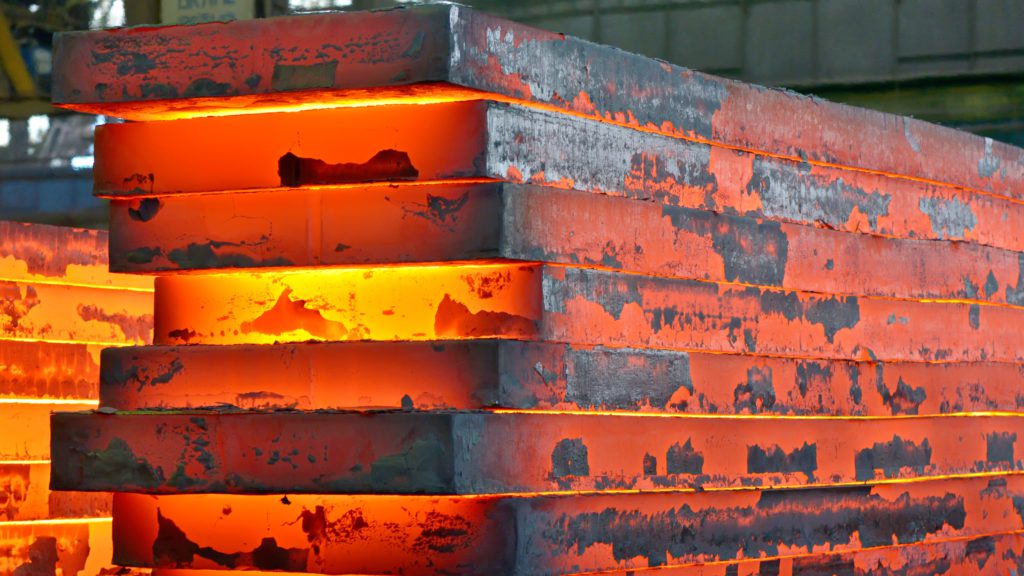Column: Iron ore dances between China stimulus optimism and soft economic reality

Iron ore is engaging in a familiar dance of flitting between hopes of more and effective economic stimulus in China, and the reality that the rebound in the world’s second-biggest economy is sputtering.
The spot price of iron ore has gyrated in recent weeks, driven by hopes for more stimulus from Beijing and concerns that the run of soft economic indicators is likely to extend.
China buys more than 70% of the total volume of global seaborne iron ore and produces just over half of the world’s steel, making its economic conditions key to the outlook for the main raw material for steel.
The price of iron ore contracts traded in Singapore ended at $113.42 a metric tonne on Wednesday, up marginally on the day but also up 10.8% from the low this year of $102.33 on May 5.
The immediate driver was news that China’s central bank on Wednesday lowered a key short-term lending rate for the first time in 10 months, cutting the seven-day reverse repo rate by 10 basis points to 1.90%.
That reduction, and expectations of further cuts to other lending rates, is sparking optimism that Beijing is acting to boost the flagging property sector, which consumes about one-third of China’s steel output.
The hope can be seen in the domestic iron ore price, with contracts on the Dalian Commodity Exchange outperforming Singapore futures.
The front-month Dalian contract ended at 804 yuan ($112.29) a metric tonne on Wednesday, up 1.5% on the day and about 17.8% above the closing low for the year of 682.5 yuan on May 25.
There are also some fundamental supports for the iron ore price, most noticeably declining inventories at China’s ports.
Port stockpiles monitored by consultants SteelHome dropped to 126.2 million metric tonnes in the week to June 9, down from 126.9 million the previous week and hitting their lowest level since July last year.
There is a seasonal pattern to inventories as they build over the northern winter while steel mills curb output, then drop as steel production ramps up for the summer construction season.
In the same week last year, inventories were at 128.3 million metric tonnes, or 1.6% above the current level.
Although this isn’t a huge drop on a year-on-year basis, it does indicate that there is room for steel mills to keep imports at a robust level and keep stockpiles comfortable.
Another bullish indicator is steel mills’ lifting production rates, with data from the China Iron and Steel Association showing output at its members rose to 2.23 million metric tonnes a day in the June 1-11 period, up 6.5% from the May 21-31 period.
The association also reported that steel inventories were 15.8 million metric tonnes over June 1-10, up 1.2% from the prior 10 days but down 15% from the same period in 2022.

Soft economic data
Countering the positive indicators for iron ore demand is a raft of underwhelming economic data that shows China’s rebound after ending its strict zero-Covid policy in December has been uneven.
Industrial output grew 3.5% in May from a year earlier, the National Bureau of Statistics said on Wednesday, slowing from the 5.6% gain in April and below a 3.6% increase expected by analysts in a Reuters poll.
Retail sales, which had been the bright spot in China’s economy in the first quarter, lifted 12.7%, missing forecasts of 13.6% growth and down from April’s 18.4%.
The weak data may actually boost iron ore sentiment, as investors will expect further stimulus measures from Beijing.
But for any rally to sustain, it will be necessary for stimulus to translate into actual steel demand in coming months.
In the meantime, China’s appetite for iron ore imports is likely to remain locked within the fairly tight band of 90 million to 103 million metric tonnes per month, which has persisted since July 2022.
June’s imports are expected to be about 98 million metric tonnes by commodity analysts Kpler, which would be slightly ahead of May’s official customs figure of 96.18 million.
(The opinions expressed here are those of the author, Clyde Russell, a columnist for Reuters.)
(Editing by Gerry Doyle)
{{ commodity.name }}
{{ post.title }}
{{ post.date }}

Comments